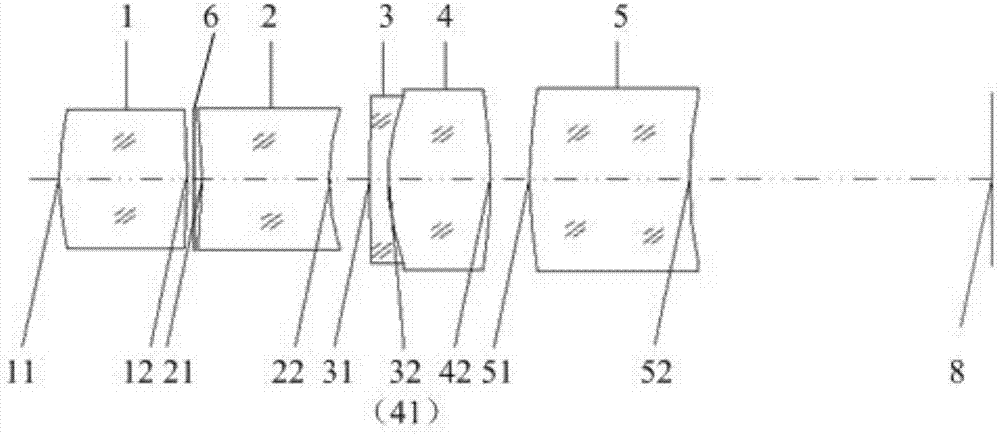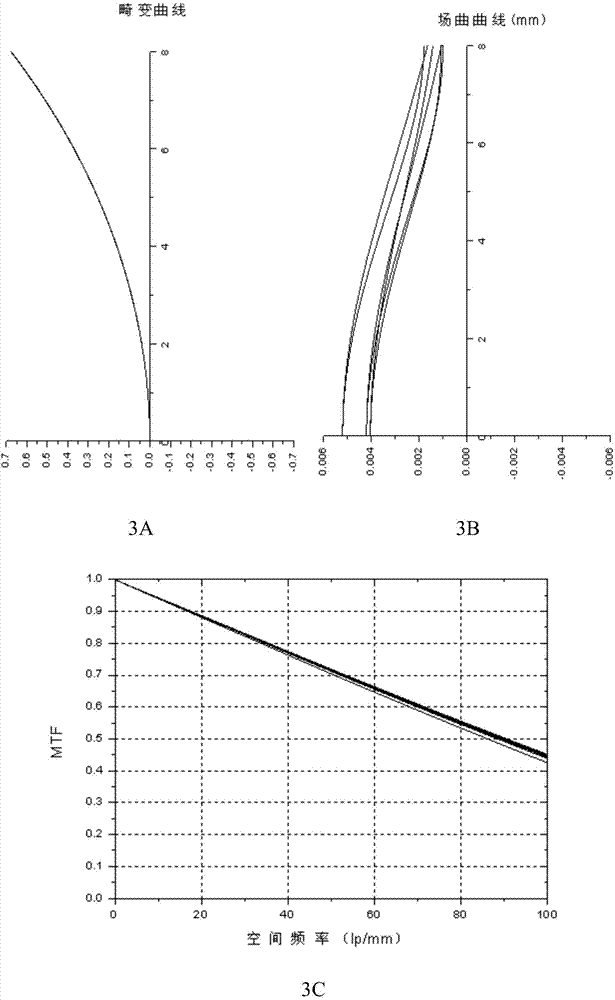Imaging lens, iris imaging module and iris identification device
An imaging lens and lens technology, which is applied in the field of biometrics, can solve the problems of unfavorable grasping distance and alignment, large volume of zoom optical system, and narrow collection range of equipment, so as to achieve wide range of object depth of field, high imaging quality, and coordination The effect of low degree requirements
- Summary
- Abstract
- Description
- Claims
- Application Information
AI Technical Summary
Problems solved by technology
Method used
Image
Examples
Embodiment 1
[0044] This embodiment is an imaging lens for binocular iris recognition, such as figure 2As shown, it consists of five lens groups and a diaphragm 6. An image sensor 8 is arranged behind the imaging lens. Along the incident direction of light, there are: the first lens 1 with positive refractive power, which is a biconvex lens, and the front surface 11 is convex. , the rear surface 12 is a convex surface; the second lens 2 with negative refractive power is a biconcave lens, the front surface 21 is concave, and the rear surface 22 is concave; the third lens 3 and the fourth lens 4 are cemented lenses, and the third lens 3 is a convex-concave lens with positive refractive power, the front surface 31 is convex, and the rear surface 32 is concave; the fourth lens 4 is a biconvex lens with positive refractive power, the front surface 41 is convex, and the rear surface 42 is convex; it has negative refractive power The fifth lens 5 is a convex-concave lens, the front surface 51 is...
Embodiment 2
[0051] This embodiment is an imaging lens for binocular iris recognition, such as Figure 4 As shown, it consists of five lens groups and a diaphragm 6. An image sensor 8 is arranged behind the imaging lens. Along the incident direction of light, there are: the first lens 1 with positive refractive power, which is a biconvex lens, and the front surface 11 is convex. , the rear surface 12 is a convex surface; the second lens 2 with negative refractive power is a biconcave lens, the front surface 21 is concave, and the rear surface 22 is concave; the third lens 3 and the fourth lens 4 are cemented lenses, and the third lens 3 is a convex-concave lens with positive refractive power, the front surface 31 is convex, and the rear surface 32 is concave; the fourth lens 4 is a biconvex lens with positive refractive power, the front surface 41 is convex, and the rear surface 42 is convex; it has negative refractive power The fifth lens 5 is a convex-concave lens, the front surface 51 i...
PUM
 Login to View More
Login to View More Abstract
Description
Claims
Application Information
 Login to View More
Login to View More - R&D
- Intellectual Property
- Life Sciences
- Materials
- Tech Scout
- Unparalleled Data Quality
- Higher Quality Content
- 60% Fewer Hallucinations
Browse by: Latest US Patents, China's latest patents, Technical Efficacy Thesaurus, Application Domain, Technology Topic, Popular Technical Reports.
© 2025 PatSnap. All rights reserved.Legal|Privacy policy|Modern Slavery Act Transparency Statement|Sitemap|About US| Contact US: help@patsnap.com



